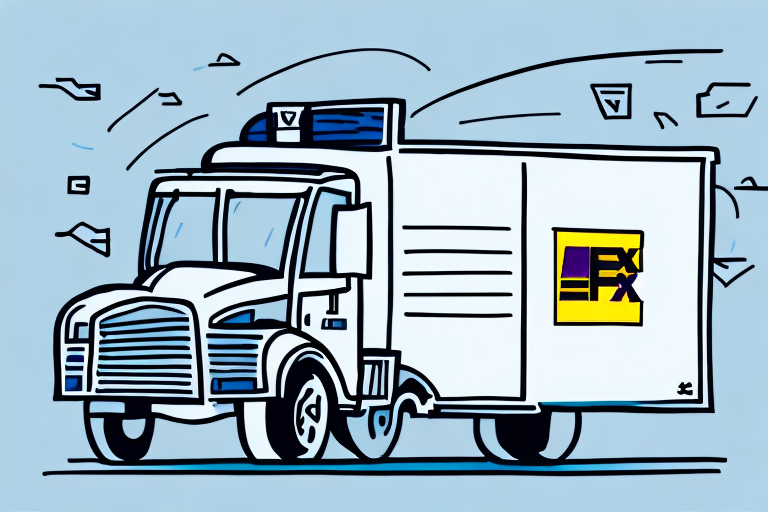Understanding FedEx Delivery Status Codes
When it comes to shipping packages, knowing where your shipment is and when it will arrive is crucial. This is where FedEx delivery status codes come into play. In this article, we’ll explore what delivery status codes are, why it’s important to know them, and how to read and interpret them. We’ll also take a look at common status codes and their meanings, and provide tips on how to troubleshoot issues you may encounter while tracking your shipment.
What are FedEx Delivery Status Codes?
FedEx delivery status codes are a system of tracking an item’s delivery progress. These codes are unique to FedEx and are used to provide customers with real-time updates on their shipment. They allow you to track the status of your package from the moment it is picked up until it reaches its final destination.
Each FedEx delivery status code has a specific meaning. For example, "In Transit" means that the package is on its way to the destination, while "Delivered" means that the package has been successfully delivered to the recipient. Other status codes include "Exception,” which indicates that there has been a delay or issue with the delivery, and "On FedEx vehicle for delivery,” which means that the package is currently on a delivery truck and will be delivered soon. By understanding these codes, customers can stay informed about the status of their package and anticipate any potential delays or issues.
The Importance of Knowing FedEx Delivery Status Codes
Knowing FedEx delivery status codes helps you to stay informed about the status of your shipment. This means you can anticipate any potential delays or issues that may arise, and take the necessary steps to mitigate them. By keeping track of your shipment using status codes, you can make informed decisions about when to expect your package and ensure that someone is available to receive it.
Additionally, understanding FedEx delivery status codes can also help you to identify any potential issues with your shipment. For example, if you notice that your package has been marked as "exception" or "delayed," you can contact FedEx customer service to inquire about the reason for the delay and what steps can be taken to resolve the issue. This can save you time and frustration in the long run, as you can address any problems with your shipment proactively.
How to Read FedEx Delivery Status Codes
FedEx delivery status codes are typically made up of a combination of letters and numbers. Each code represents a specific stage in the delivery process. For example, "FDX" stands for "FedEx," and "IC" stands for "In Transit, Customs."
To read a FedEx delivery status code, simply refer to the tracking information provided by FedEx. The status code will be listed alongside the description of the current status of your shipment. You can also refer to the FedEx website or mobile app for up-to-date information on the status of your shipment.
It is important to note that FedEx delivery status codes may vary depending on the type of shipment and the destination country. Some codes may also indicate that there is an issue with the delivery, such as a delay or a problem with customs clearance. If you are unsure about the meaning of a particular status code, you can contact FedEx customer service for assistance.
Common FedEx Delivery Status Codes Explained
- In Transit: The package is on its way to the destination.
- Delivered: The package has been successfully delivered to the recipient.
- Exception: There has been a delay or issue with the delivery.
- On FedEx vehicle for delivery: The package is currently on a delivery truck and will be delivered soon.
It is important to note that these delivery status codes may vary depending on the type of shipment and the location. Additionally, FedEx offers a tracking feature that allows customers to track their packages in real-time and receive updates on any changes in delivery status. This feature can be accessed through the FedEx website or mobile app.
How to Track Your Shipment Using FedEx Delivery Status Codes
To track your shipment using FedEx delivery status codes, simply enter your tracking number on the FedEx website or mobile app. The status of your shipment will be updated in real-time as the package moves through the delivery process.
You can also sign up for email or text message alerts to receive updates on the status of your shipment. This can be helpful if you need to know when your package is due to arrive or if there are any delays or issues that may impact the delivery time.
It’s important to note that FedEx delivery status codes are not always updated in real-time and there may be delays in the system. If you notice that your shipment has not been updated in a while, don’t panic. It’s possible that the package is still in transit and the system simply hasn’t caught up yet. However, if you have concerns about the status of your shipment, you can always contact FedEx customer service for assistance.
What to Do If You Encounter an Unfamiliar FedEx Delivery Status Code
If you encounter an unfamiliar FedEx delivery status code, don’t panic. While it may be concerning to see a code you’re not familiar with, many status codes are simply internal codes used by FedEx to track shipments behind the scenes. In most cases, there is no need to take any action in response to an unfamiliar status code.
However, if you are concerned or confused about a status code, you can always contact FedEx customer service for more information.
The Evolution of FedEx Delivery Status Codes: A Brief History
FedEx delivery status codes have gone through some changes over the years. In the early days, tracking information was limited to basic information such as the shipment’s origin and destination. As technology evolved, so too did the ability to track and monitor shipments in real-time.
Today, FedEx delivery status codes provide customers with a wealth of information about their shipment, including where it is at any given moment and when it is expected to arrive.
Best Practices for Managing Your FedEx Deliveries Using Delivery Status Codes
To make the most of FedEx delivery status codes, it’s important to stay informed about your shipment status and take action as needed. Here are some best practices for managing your FedEx deliveries:
- Regularly check the status of your shipment.
- Sign up for email or text message alerts.
- Contact FedEx customer service if you encounter any issues.
How to Troubleshoot Common Issues with FedEx Deliveries Using Status Codes
Even with the best planning and preparation, issues can still arise when it comes to your FedEx deliveries. Here are some common issues you may encounter and how to troubleshoot them using status codes:
- If your package is marked as “exception,” contact FedEx customer service to inquire about the delay.
- If your package hasn't been updated in a while, be patient as there may be system delays.
- Ensure that the delivery address and recipient information are accurate.
Understanding the Role of Technology in Developing Reliable FedEx Delivery Systems
Advances in technology have played a significant role in developing FedEx’s reliable delivery systems. From GPS tracking to real-time updates, technology has enabled FedEx to provide customers with accurate and up-to-date information about their shipments. As technology continues to evolve, we can expect to see even more advancements in tracking and monitoring systems.
The Impact of COVID-19 on FedEx Delivery Systems and Status Codes
The COVID-19 pandemic has had a significant impact on FedEx delivery systems and status codes. With an increase in online shopping and more people at home to receive deliveries, FedEx has faced new challenges in delivering packages safely and efficiently.
To address these challenges, FedEx has implemented new safety protocols and procedures, such as contactless delivery and social distancing measures. They have also updated their status codes to reflect these changes and keep customers informed about any delays or issues due to the pandemic.
The Future of FedEx Deliveries and What it Means for Understanding Delivery Status Codes
The future of FedEx deliveries looks bright, as the company continues to innovate and improve its delivery systems. This means that customers can expect even more accurate and up-to-date information about their shipments, with new tracking and monitoring technologies on the horizon.
As FedEx continues to evolve and improve its delivery systems, it’s important to stay informed about delivery status codes and how they work. By understanding these codes and using them to manage your shipments, you can ensure that your packages arrive safely and on-time.
Top Tools and Resources for Tracking Your Packages using FedEx Delivery Status Codes
Here are some top tools and resources for tracking your packages using FedEx delivery status codes:
- FedEx website tracking tool
- FedEx mobile app
- Email and text message alerts
- Customer service support
Tips for Optimizing Your Shipping Strategy with the Help of FedEx Delivery Status Codes
To optimize your shipping strategy, it’s important to make the most of FedEx delivery status codes. Here are some tips:
- Schedule shipments accurately to ensure timely delivery.
- Use tracking tools to monitor the status of multiple shipments.
- Stay proactive in addressing any delivery issues as soon as they arise.
Conclusion
FedEx delivery status codes provide crucial information for tracking and monitoring your shipments. By understanding these codes and using them to manage your deliveries, you can ensure that your packages arrive safely and on-time. From troubleshooting common issues to optimizing your shipping strategy, there are many ways to make the most of FedEx delivery status codes. So the next time you’re waiting for a package, be sure to check the status code for up-to-date information on your shipment’s progress.




















